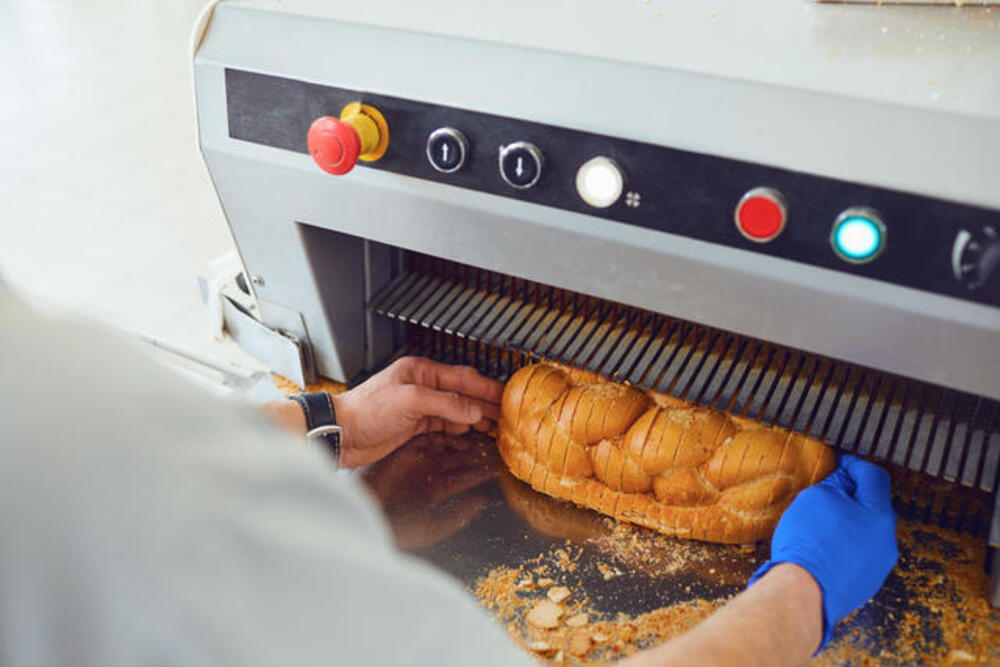What will you do when it comes to tightening your loose kitchen faucet? Of course, the first thing that will come into your mind is calling a plumber. But before calling the plumber, give some of your valuable time in our article. Hopefully, you will get a better solution to fixing your faucet instead of calling a plumber.
After a long time using, loosening the kitchen faucet is very common during its lifespan. But you mustn’t leave it after recognizing the faults of the kitchen faucet.
Verily, a faulty kitchen faucet enhances the chances of cleft the water supply lines. Not only that, but a loose faucet also may lose the other part of the faucet, including handle. Hence, it is important to tighten the loose faucet immediately.
Now, how to tighten a loose Moen single handle kitchen faucet?
Indeed, plumbing is the better solution for fixing your faulty kitchen faucet. But tightening the kitchen faucet is not such a big task that you need a plumber. Why will you go to a plumber and waste your money if you can do the task by yourself?
The most two common problems that occur with the kitchen faucet is loosening the base and loosening handle. In our article, we have covered how to fix both of the faucet problems. Please keep scrolling to repair your faulty kitchen faucet.
Instruments you’ll need
- Flashlight
- Adjustable wrench
- Masking tape
- Screwdriver (Flathead)
- Allen wrench/ Hex head wrench set (3/32 inch)
- Mini knife
How to tighten the base of a Moen kitchen faucet?
The smooth movement is essential for kitchen faucets. But too much free movement causes water leakage by rupturing the water supply lines. It’s annoying, doesn’t it?
By tightening the base of the faucet, you can easily get rid of this nuisance. How to tighten the base of a Moen single handle kitchen faucet? Indeed, our guidelines will help you to tighten the base of the single handle on your own. Follow us to tighten the base of your kitchen faucet.
Step 1: Connect the drain of the sink.
Firstly, connect the drain of the sink with its cover. This step will not let the faucet’s nuts or any small parts go out from the drain.
Indeed, all the small to big parts of the faucet are very important. If any part of the faucet gets lost, you might not find the exact one from the stores. That’s why it is one of the crucial steps that you must do before fixing your loose faucet.
Step 2: Disconnect all types of water supply valves
The second step is turning off the water supply valves. Typically, you might have two types of water supply valves at your kitchen sink; cold water and hot water valves.
Make sure both of the lines are disconnected so that no water drips from the supply lines. Check the water supply by turning on the faucet handle.
Step 3: Clear the kitchen sink.
The materials that are kept on your kitchen sink can hinder your work when repairing the kitchen faucet. So, remove all the materials from the kitchen sink to ensure nothing can create obstacles during work.
Step 4: Release pressure from the faucet
You must remove all the pressures from the faucet in order to tighten it spontaneously. Turning off the valve might create pressure on your faucet.
So, before going to the next step, turn on the water valves to release the pressure of the faucet’s pressure. Do it immediately after disconnecting the water supply lines and go to the further process.
Step 5: Pry off the water lines
Now, it’s time to pray off the water lines. For this, put an adjustable wrench in the middle of the intel and water supply lines. Afterward, turn the wrench to the anticlockwise direction in order to pry off the lines.
Step 6: Tighten the loosen nuts and screws of the faucet.
You are almost done. Now, check out the grip of the base nuts that connect the kitchen faucet. Hold the loose nuts with the basic wrench and gradually apply pressure to tighten it.
Tighten the nut situated between the base and faucet with a basin wrench.
Step 7: Check the tightness
Tightening the faucet is not the end of the project. You must check the tightness after accomplishing the work. For this, you must have to reconnect the water supply valves at first.
Turn on the faucet and check whether there is any leakage in the tap or not. If there is no leakage, found then your work is done. Otherwise, you further have to use the basin wrench to tighten the base of the faucet.
How to tighten the handle of the Moen kitchen faucet?
Due to excessive use or long-time use, the handle of the kitchen faucet gets loose. The consequence is a significant loss of dipping water. When having a faulty or loose kitchen faucet, you must fix it immediately.
Now, how to tighten the handle of the Moen kitchen faucet so that it responds quickly? Let’s know some simple steps of tightening the handle of the Moen kitchen faucet.
Step 1: Clear the sink.
First, remove all the materials from the top of the sink to operate your activities without any restrictions. It would be better if you clean your basin before starting your activities.
Step 2: Turn off the water supply valves
Turn off the water supply valves, likewise the previous section. As we told before, it is a compulsory step for fixing your kitchen faucet.
Step 3: Check the kitchen faucet’s handle
Check the mechanism of Moen kitchen faucet and pursue proper knowledge. This step will help you to conduct your fixing operations. You might have two things on your Moen kitchen faucet.
- At the entrance of the faucet’s handle, you will find a hex nut or screw.
- On top of the faucet’s handle, you will find a cap.
Step 4: Remove the Hex Nut of the handle.
Whether having a hex nut or screw on your faucet’s handle, you must remove it. Both the hex nut and screw is very small material. So, you must use a mini knife when unscrewing the hex nut.
Do it very gently so that you may not damage the handle of the faucet. You will need less than a minute in unscrewing the hex nut or screw.
Step 5: Find out the setscrew hidden in the cap of the faucet’s handle.
Now it’s time to accomplish one of the trickiest parts of fixing the faucet’s handle. That is finding the setscrew, which is situated under the decorative cap. Not all types of tools can reach the hidden setscrew and are placed under the handle’s cap.
An ideal size Allen wrench can reach almost any corners of your faucet and make your work easier. The 3/32 sized Allen wrench is the ideal size for installing the handle screw. That’s because the 3/32 sized Allen wrench can reach to the tough corner of any equipment.
Choose an accurate size Allen wrench and apply it to fit the handle screw. Indeed, you will feel the screw once the wrench can reach the screw. Enter the wrench at a slight angle direction if you don’t find the screw by applying straightforwardly.
Step 6: Tighten the setscrew of the faucet handle.
The biggest task of tightening the handle is finding its hidden setscrew. Once you find it, doing the rest of the part is not a big deal.
Once you find the setscrew, hold the screw with the basin wrench. Afterward, tighten the screw by twisting in the clockwise direction. You must apply mild pressure when twisting the screw in order to tighten firmly.
You must need to open the handle when using it. By keeping that in mind, don’t tighten the screw too strongly.
Step 7: Attach the water supply valves.
The steps of tightening the faucet’s handle do not end here. You must check the tightness of the handle before wrapping up your fixing equipment.
After fixing the faucet’s handle, reconnect the Moen kitchen faucet with the water supply valves. Turn on the faucet and let the water flow. Check the tightness of the handle when turning on the faucet. Additionally, make sure the water is running smoothly.
If the tightness and water smoothness of the faucet is okay, then your work is done. Otherwise, you can tighten the setscrew of the faucet’s handle more firmly.
Hopefully, you will not find it too difficult to tighten your Moen faucet after reading our article. Apply each step very carefully to protect your faucet and yourself.
Some precautionary steps
- Wear the hand gloves to eradicate the risk of any unwelcome accident. Notably, when using the basin wrench for tightening the screws, you must put hand gloves on your hand. Otherwise, you may crack your finger.
- Choose the right size Allen wrench to find the hidden setscrew and twist it quickly.
- Don’t forget to use a flashlight when conducting the tightening operations. The advantage will be in front of you when you use it.
- It would be better if you keep someone to help you with your operations.
The sum up!
Indeed, a loose kitchen faucet causes water wastage. Moreover, it also decreases the lifespan of the kitchen faucet. Ultimately, a faulty kitchen faucet increases your expenses by enhancing the water bills and replacement costs.
Verily, you won’t like to make the additional cost for the minor kitchen faucet’s problem. That’s why you are here to know about tightening the kitchen faucet by yourself.
In our article, we have developed how to tighten a loose Moen single handle kitchen faucet? To save your additional expenses, follow the guidelines to tighten your faucet without any plumber.
















